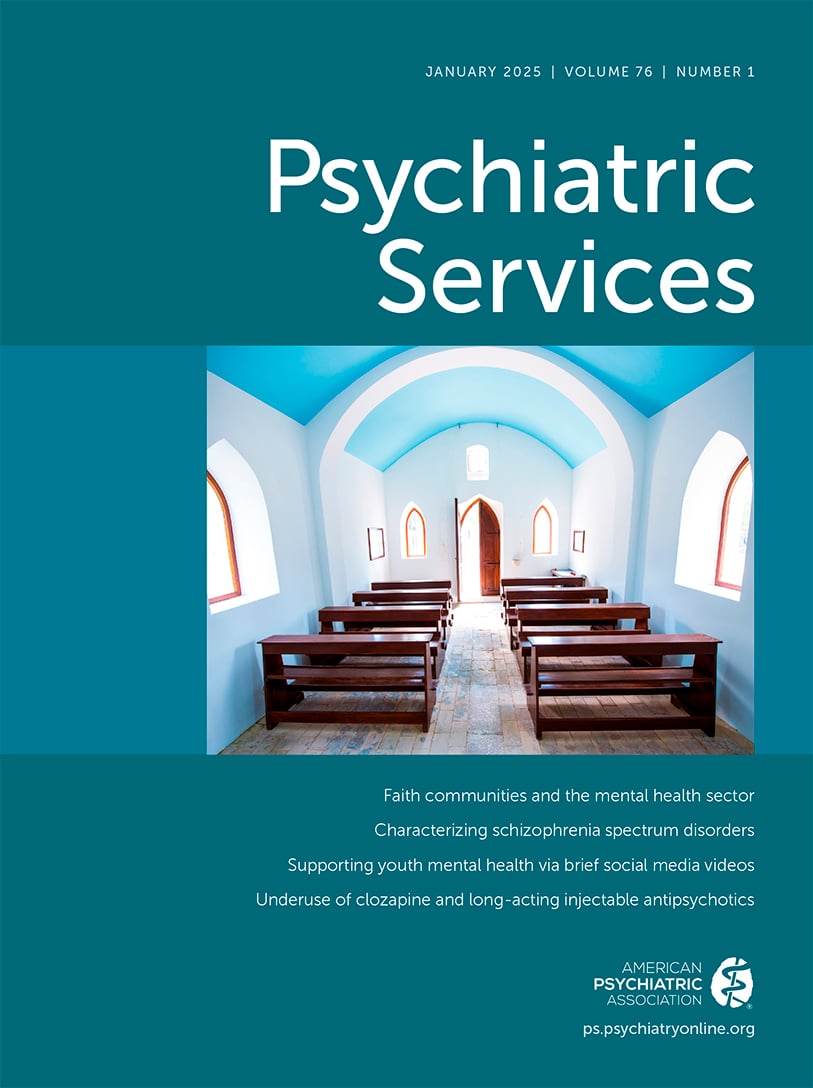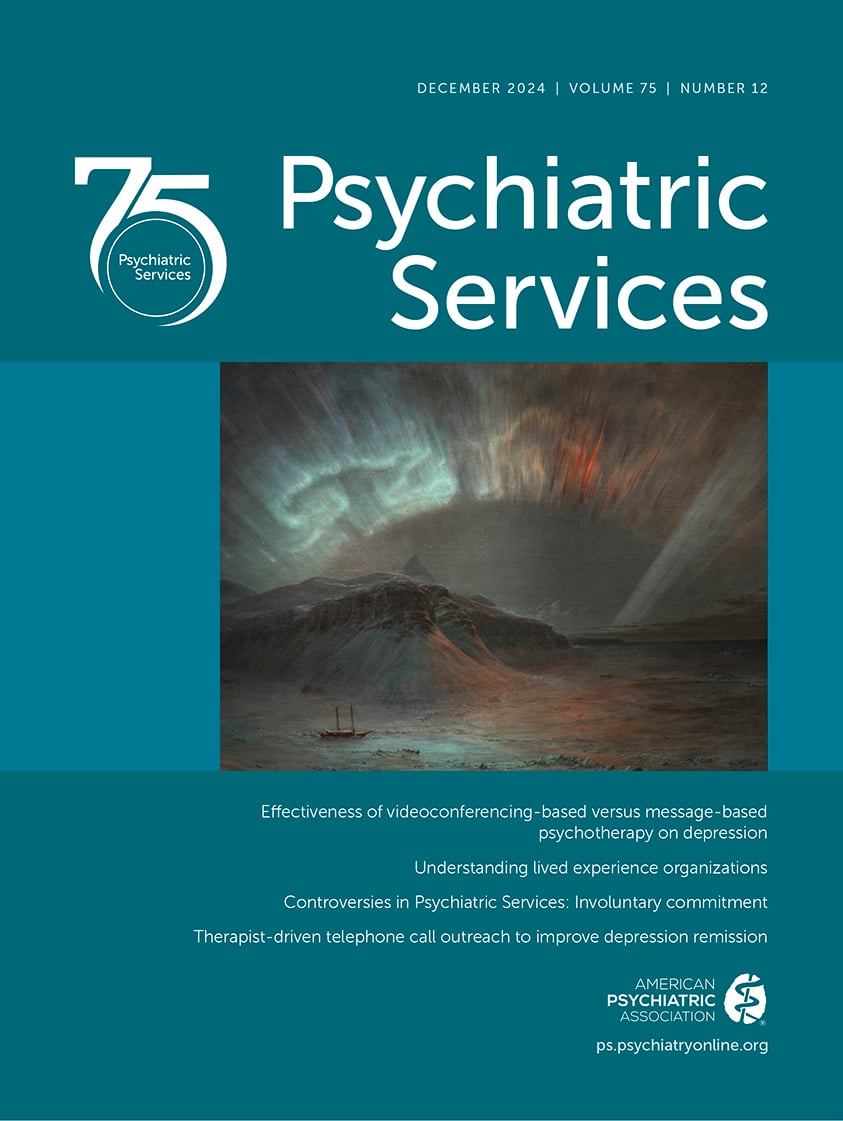Psychiatric Services
- Volume 37
- Number 6
- June 1986
Article
Publication date: 01 June 1986
Pages551–554Changes in health care economics will shape the future of psychiatric practice. Psychiatrists will work as part of a team of mental health professionals, and many will emerge as team leaders. They will recognize that they must more clearly identify the ...
https://doi.org/10.1176/ps.37.6.551Publication date: 01 June 1986
Pages577–579This month's guest expert is Dr. Stephen Goldfinger, who is assistant clinical professor of psychiatry at the University of California, San Francisco, director of inpatient psychiatry at San Francisco General Hospital, and mental health director of San ...
https://doi.org/10.1176/ps.37.6.577Publication date: 01 June 1986
Pages584–590A study based on the National Institute of Mental Health's Sample Survey Program for 1970, 1975, and 1980 provides an overview of the services to adolescents supplied by the mental health sector. Data are presented mainly for nonfederal general hospitals, ...
https://doi.org/10.1176/ps.37.6.584Publication date: 01 June 1986
Pages591–596Many adolescent affective disorders are rooted in biological vulnerability to stress and a predisposition to mood variations that are latent in childhood. As these stress-sensitive children encounter the normative helplessness and struggle for autonomy of ...
https://doi.org/10.1176/ps.37.6.591Publication date: 01 June 1986
Pages596–607The author reviews general principles for assessing, intervening in, and treating adolescent drug abuse. Assessment involves uncovering the extent of the drug problem and the reasons behind it, including the role of family psychodynamics. In the ...
https://doi.org/10.1176/ps.37.6.596Publication date: 01 June 1986
Pages608–613Attention deficit disorder may be part of a cluster of observable behaviors that reflect a dysfunctional central nervous system. The authors describe the differential diagnosis of attention deficit disorder in adolescents, a complex process in which the ...
https://doi.org/10.1176/ps.37.6.608Publication date: 01 June 1986
Pages613–618The author reviews the complicated history of the concept of borderline personality disorder and associated diagnostic entities, especially as these conditions relate to adolescents. He examines current theories about etiology of borderline personality ...
https://doi.org/10.1176/ps.37.6.613Publication date: 01 June 1986
Pages619–623A study of 189 consecutive psychiatric dispositions from the emergency service of an urban university hospital illustrates the difficulty that emergency psychiatric clinicians face when trying to find a receiving institution for a patient requiring ...
https://doi.org/10.1176/ps.37.6.619Publication date: 01 June 1986
Pages624–629Little attention has been paid to the organizational and administrative characteristics of effective community support programs for the chronic mentally ill. The authors analyzed three successful support programs in Wisconsin that employ three different ...
https://doi.org/10.1176/ps.37.6.624Publication date: 01 June 1986
Page629Due to an editing error, the letter by Sheldon Blackman, Ph.D., Robert V. Simone, C.S.W., and Donald R. Thorns, M.S., on the treatment of gamblers in the April issue (page 404) contained a reference to a paper by Russo and his colleagues. The sentence ...
https://doi.org/10.1176/ps.37.6.629Publication date: 01 June 1986
Pages631–633The Med H clinic has been effective both clinically and economically in treating many types of somatizing patients and has served as a useful learning environment for psychiatric residents. The individualized treatment and supportive clinic environment ...
https://doi.org/10.1176/ps.37.6.631Publication date: 01 June 1986
Pages633–635The problems identified and addressed by the TEAMS model are numerous and broad. They exist within an extremely complex systern of hospital-based health care and medical training. An early evaluation indicated that TEAMS has been successful in addressing ...
https://doi.org/10.1176/ps.37.6.633Past Issues
View Issues Archive
Vol. 76 | No. 1

Vol. 75 | No. 12

Vol. 75 | No. 11
